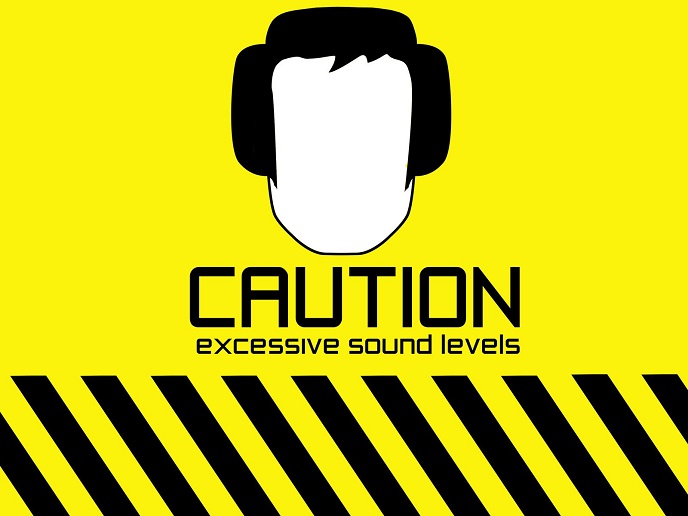By Beverly Mae Nisbeth
Noise pollution has ballooned into a major problem in St. Maarten. It is a monumental and universal challenge – other countries, regionally and internationally, are also confronted with it. This article will explain what noise pollution is, sources of noise pollution, the effects of noise pollution, and offer, what the author considers, viable and sustainable solutions.
WHAT IS NOISE POLLUTION?
Noise pollution is defined as “any level of noise that is annoying or harmful”. It impacts one’s quality of life. Noise pollution affects sleep, mental, and physical health negatively as referenced by these linked articles:
What are the health effects of noise pollution?
Effects of environmental noise on physical health
Besides physical and mental effects, noise pollution can also become a safety issue: e.g. vehicular accident/incident due to loud car audio system or an unnecessary, loud, and sudden claxon.
SOURCES OF NOISE POLLUTION (non-inclusive)
- Businesses
o Bars/restaurants
o Dance clubs
o Festival and sport venues
o Construction sites
o Garages / car wash (A car wash should not be power-washing cars after daylight hours in a residential area directly next to homes.)
o Ect….
- Private sources (non-inclusive)
o Car audio systems
o Homes (e.g. TV, radio, audio systems)
o Fireworks (It is well-established that sudden, loud noises, such as fireworks, commonly trigger a dog’s anxiety. Dogs’ hearing is also more sensitive than humans. Each year pets are terrified and go missing during New Year’s. Consider introducing a private ban or only permitting silent fireworks; these have been commercially available since the last decade.)
o Mobile or other portable electronic acoustic devices (e.g. music from a phone in a public space such as on a public bus or in a waiting area)
- Other sources (non-inclusive)
o Vehicular traffic
o Barking dogs
o Music systems on trucks during festivals
o Road works (e.g. machinery, equipment)
o (Commercial) vehicle horns (Except for in an emergency situation, (garbage) truck drivers should not be honking the horn before 7am in a residential street.)
Many large countries have mitigation measures for noise pollution. For example, highway barriers to block residential/public buildings from traffic noise; the use of quieter road surfacing material; (portable) sound barriers for establishments that produce noise; specific building codes that ensure a.o. sound insulation for noise producing establishments; operation times for (road) construction activities; and vehicle and traffic laws on acoustic and engine acceleration systems, just to name a few. These examples show the multi-disciplinary and inter-ministerial cooperation that is required. But this needn’t be an impossible task; what’s currently in place can be expanded upon. We can build upon and reform the “Politiekeur”. We can develop a noise policy which speaks to a legal framework for the management of noise from many different sources.
ATTACK STRATEGY: WHERE TO START?
- Review and upgrade law(s) and policies in order to: (not listed in any particular order)
o Introduce an environmental bill, a Noise Nuisance Act
o Define noise nuisance
o Establish “noise standards” (residential and non-residential)
o Develop a broad-based policy framework covering “statutory nuisances”. For the issue to count as a statutory nuisance it must do one of the following: unreasonably and substantially interfere with the use or enjoyment of a home or other premises; injure health or be likely to injure health.
Issues that may be a statutory nuisance include:
▪ noise from premises or from vehicles, equipment or machinery in the street ▪ smoke from premises
▪ smells from industry, trade or business premises (for example, sewage
treatment works, factories or restaurants)
▪ artificial light from premises
▪ insect infestations from industrial, trade or business premises
▪ accumulation or deposits on premises (for example, piles of rotting rubbish) o Make punishable by law
o Make confiscation possible
o Give substantial fines as a means of deterrence
o Determine when there is a nuisance
o Carry out inspections
o Design a complaint log a “three-strikes-you’re-out” system (e.g. twice a fine followed by temporary closure at the third infraction)
- Public awareness campaigns (about noise nuisance and the laws) on radio, social media platforms, billboards
- Increased crack-downs
- Efficient documenting of complaints (whether 911 calls or written)
o Create a data base of complaints to analyze where the problem areas are, what times are most common etc. This can be used as a tool for law enforcement and other entities to design targeted control methods.
- Zone residential areas as sensitive areas even if they’re mixed residential/commercial. • Zone ecological areas as sensitive areas (St. Maarten has bird nesting sites, Important Bird Areas or IBAs.)
- Business owners/operators must instruct staff on proper business rules/etiquette and operational procedures. They must also execute quality control, staff behavior.
- Stakeholder consultations (e.g. between residents, community councils, community police, event organizers, hotel associations, government ministries/departments.)
- Increased community engagement (hear something, say something; report noise pollution to the Police, write letters to your government representatives and to the Press.)
These ideas do not intend to over-simply the effective addressing of noise pollution nor the intricate workings of legal and administrative procedures of government ministries. Instead, the intention is to offer, what hopefully will be deemed, sustainable solutions or to, at the very least, add meaningful ideas to those the ministries may already have or may already be executing.
The goal of this article is to raise general awareness of noise pollution to empower people to recognize it and speak out about it and to encourage behavioral change. This article also aims to emphasize that noise pollution is a problem that demands government’s attention and effective action, as is reflected in these articles from our Constitution:
Article 21 1. The government shall take steps to promote the health of the population. Article 15 1. Everyone is entitled to undisturbed enjoyment of his property, subject to such restrictions as may be imposed under or by virtue of national ordinance in the public interest.
Noise pollution in St. Maarten needs to be properly regulated and controlled; the evidence of this statement is all around us.
Properly controlled means consistent and severe execution with guaranteed harsh penalties for non-compliance. Whether it’s loud music or noise from a construction site, or whatever the source, Government has an irrefutable duty towards its citizenry to regulate noise, as it relates not only to taking steps to promote the health of the population but also to safety and to improving quality of life.
And equally, the citizenry, that is you and I, have a duty to hold Government accountable for their constitutional responsibilities as fiduciary–an organization who has a legal duty to act in the best interest of someone else–in this case: Us. We, the People of S’maatin.






























